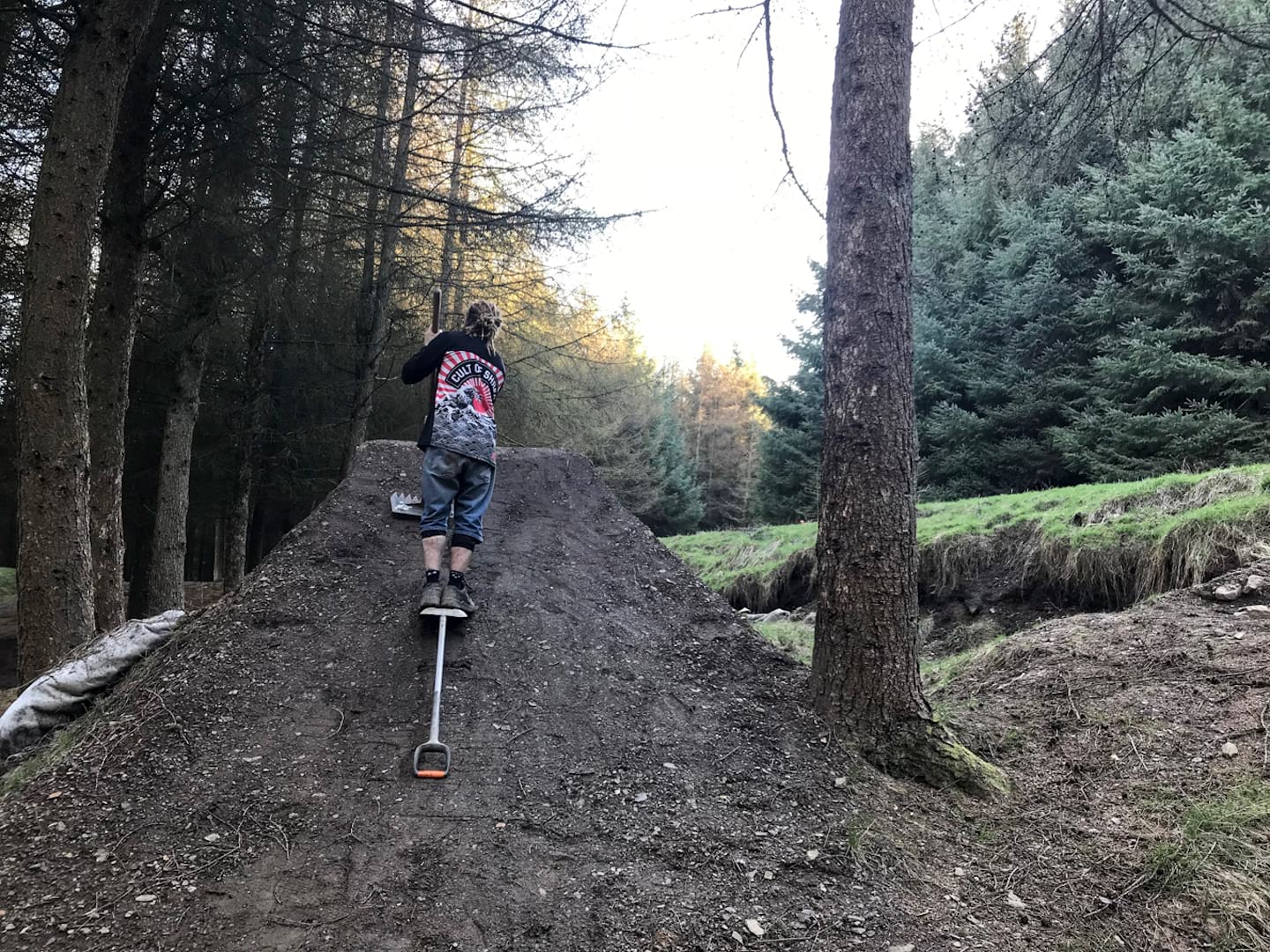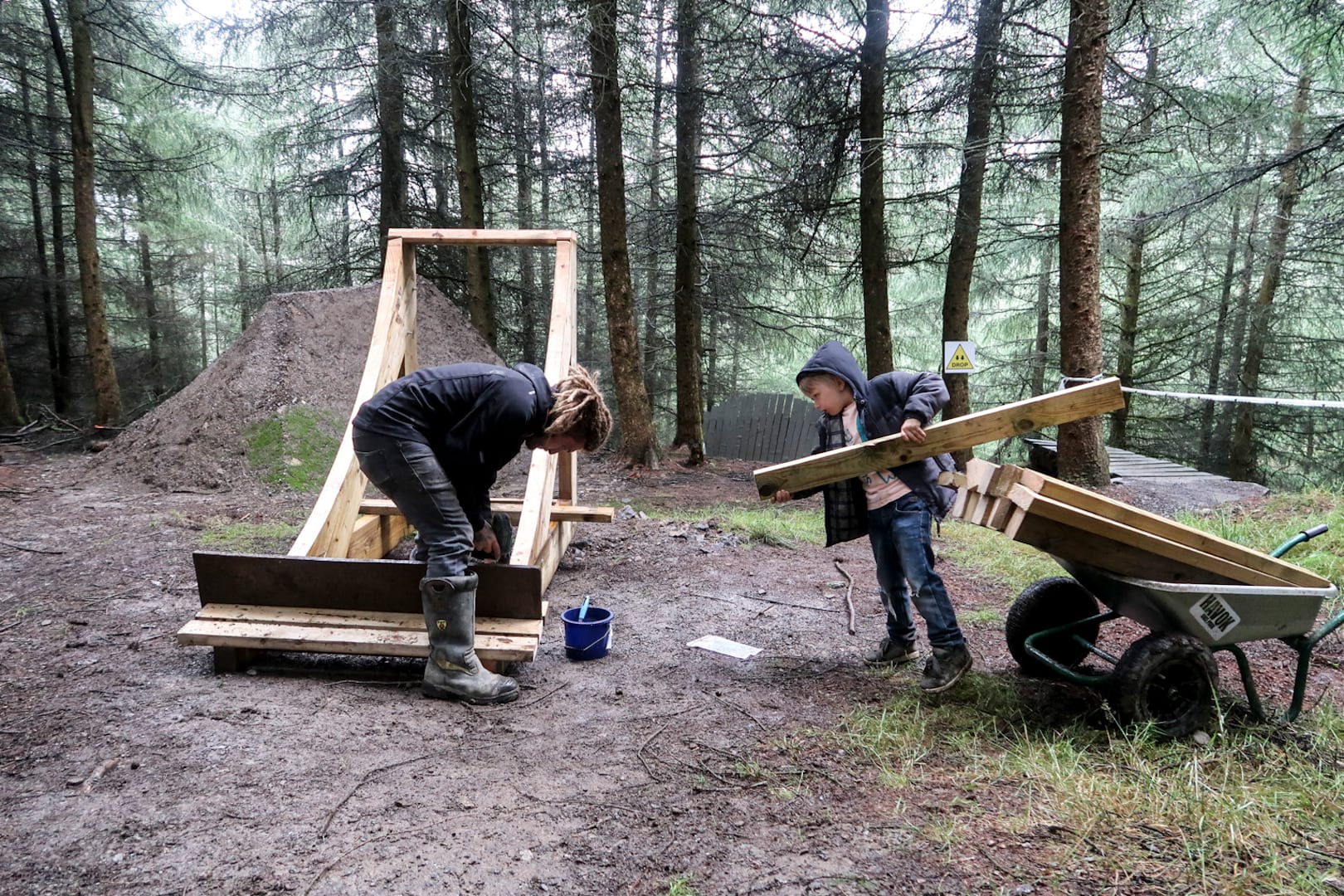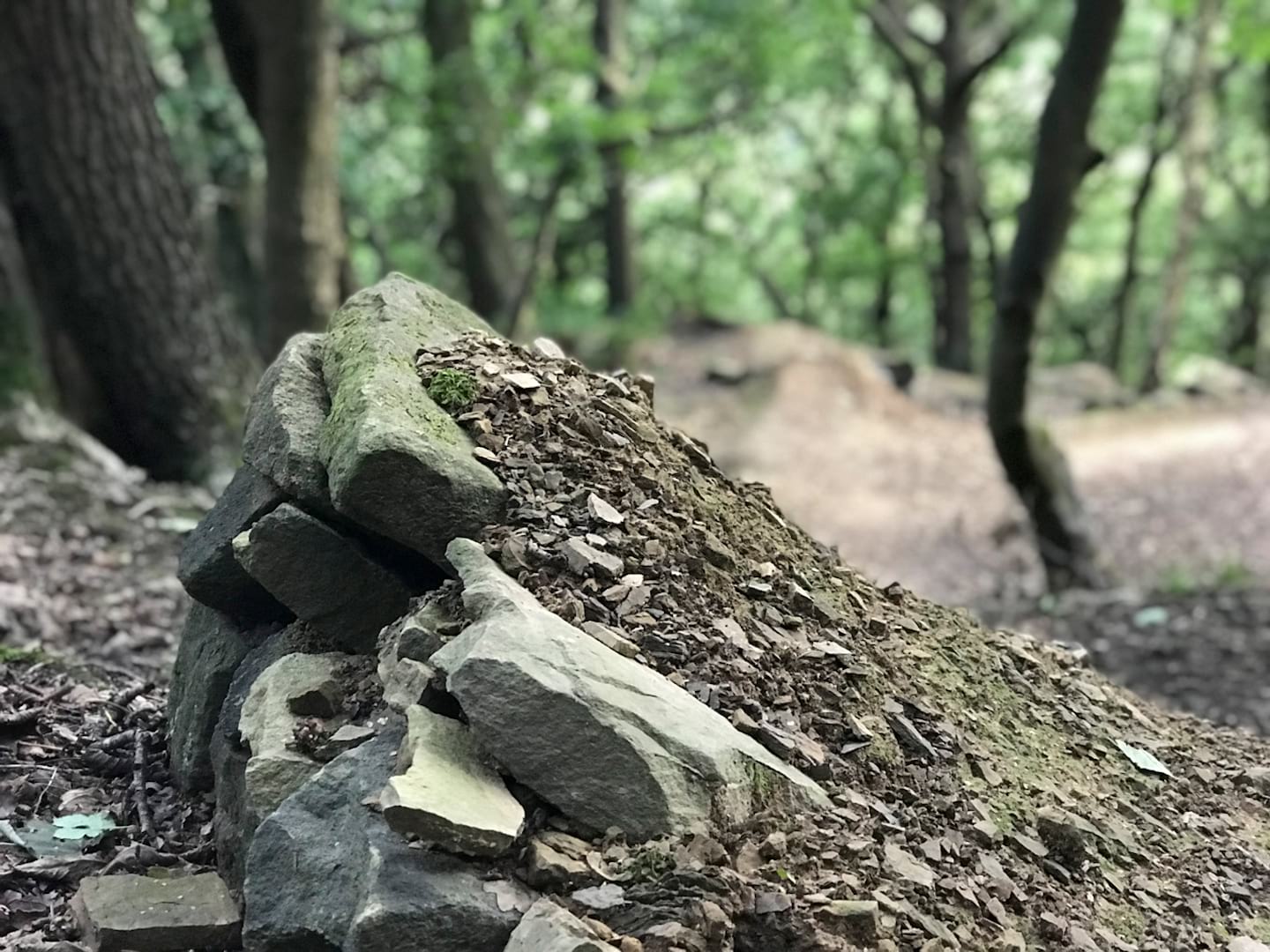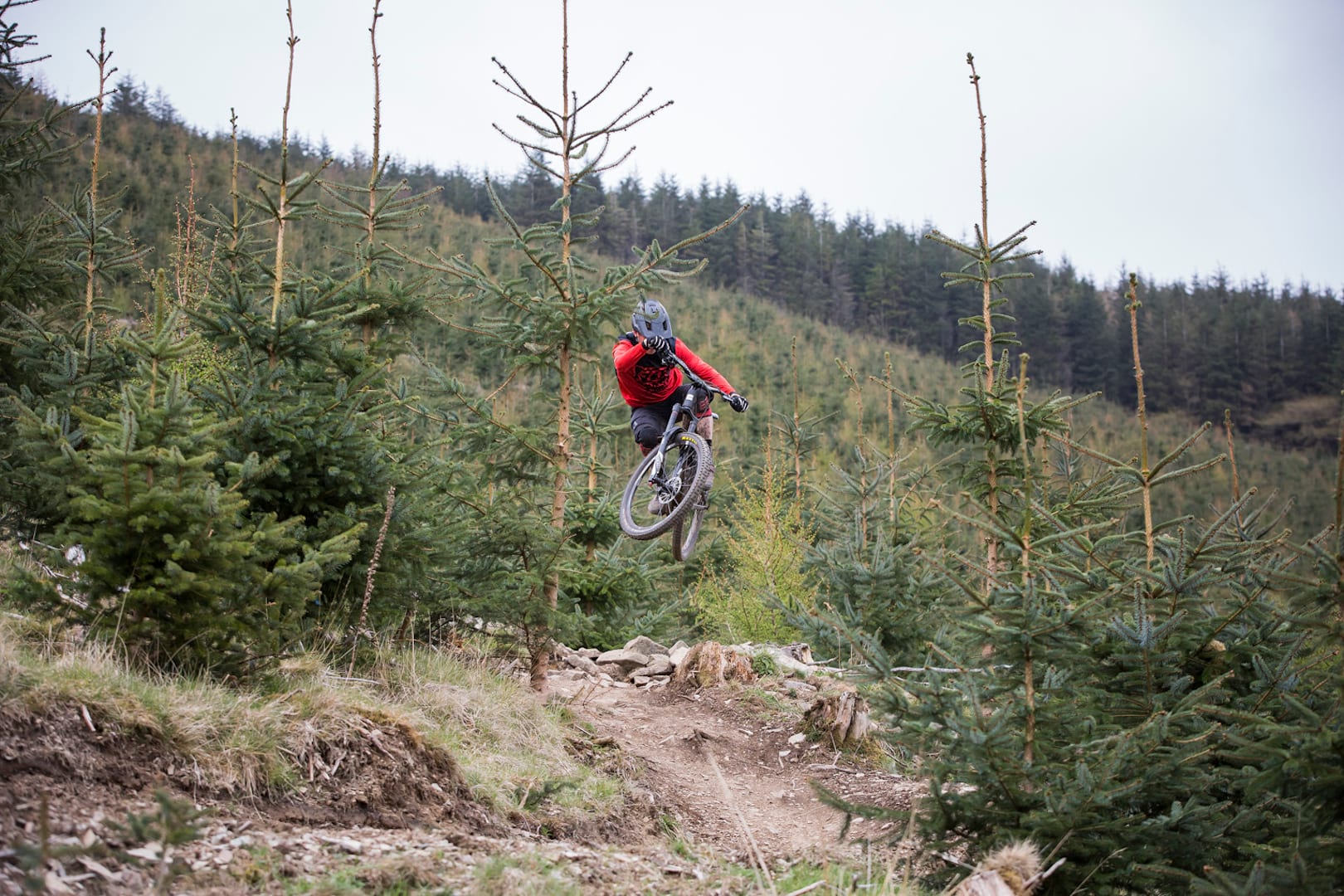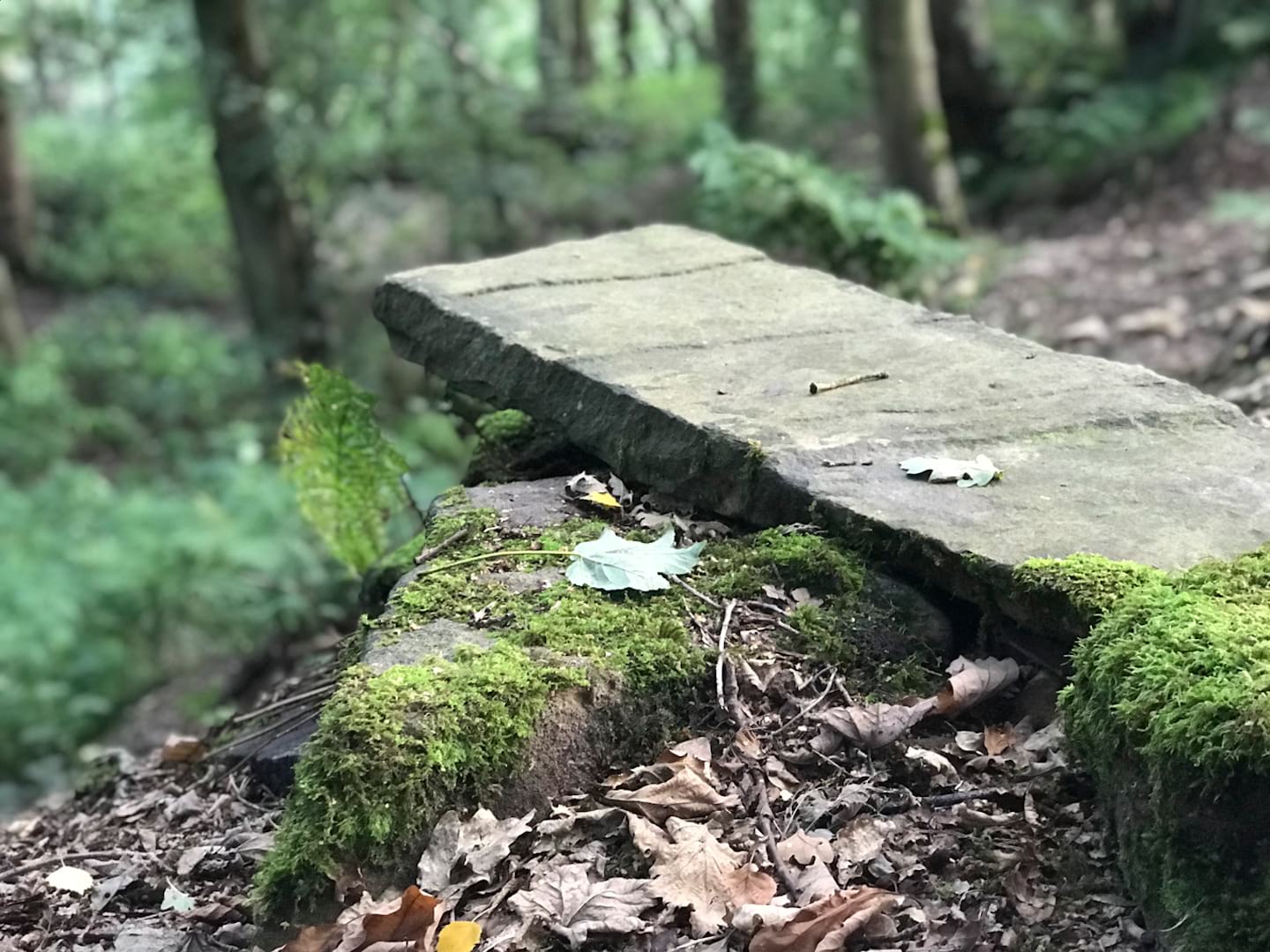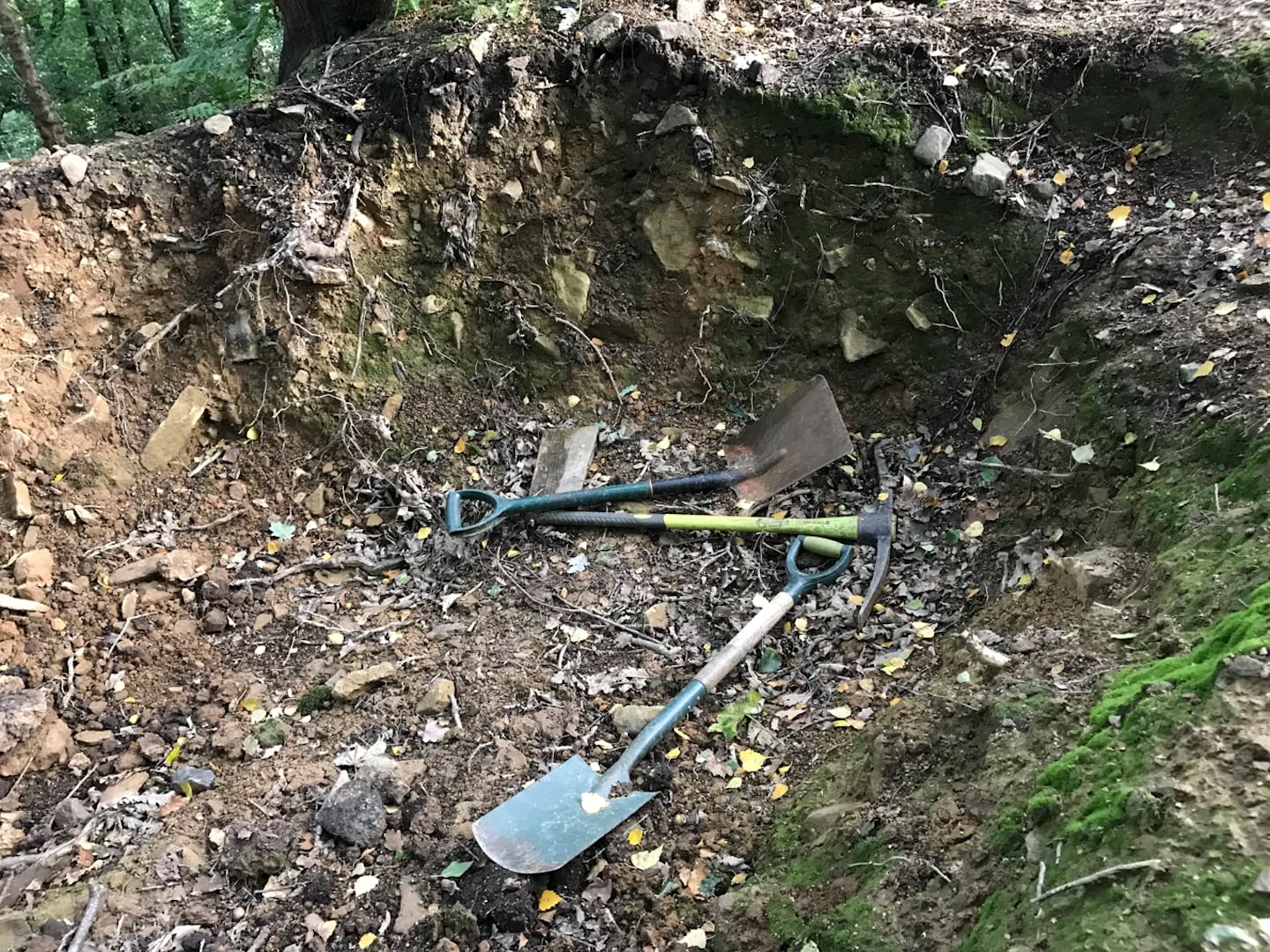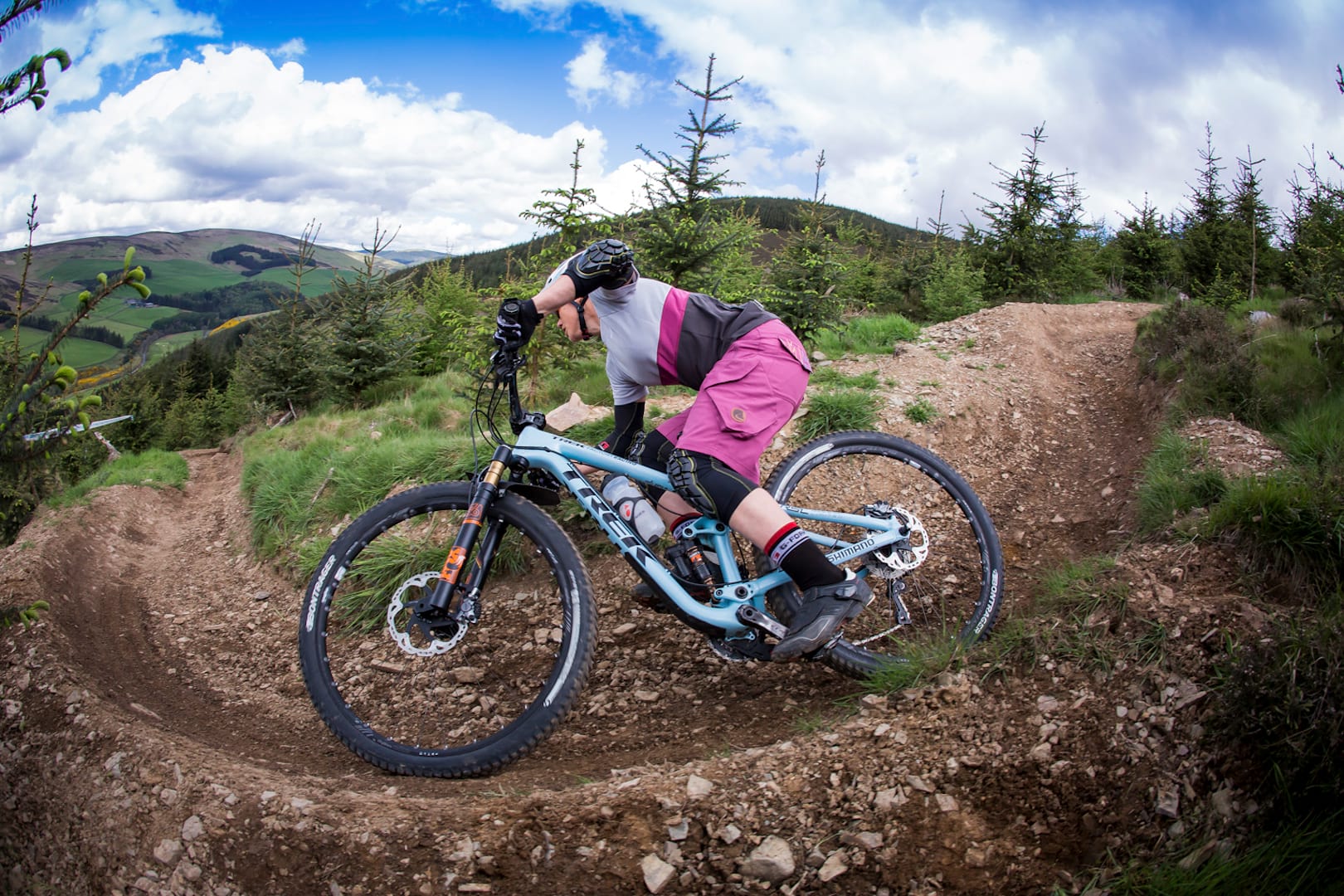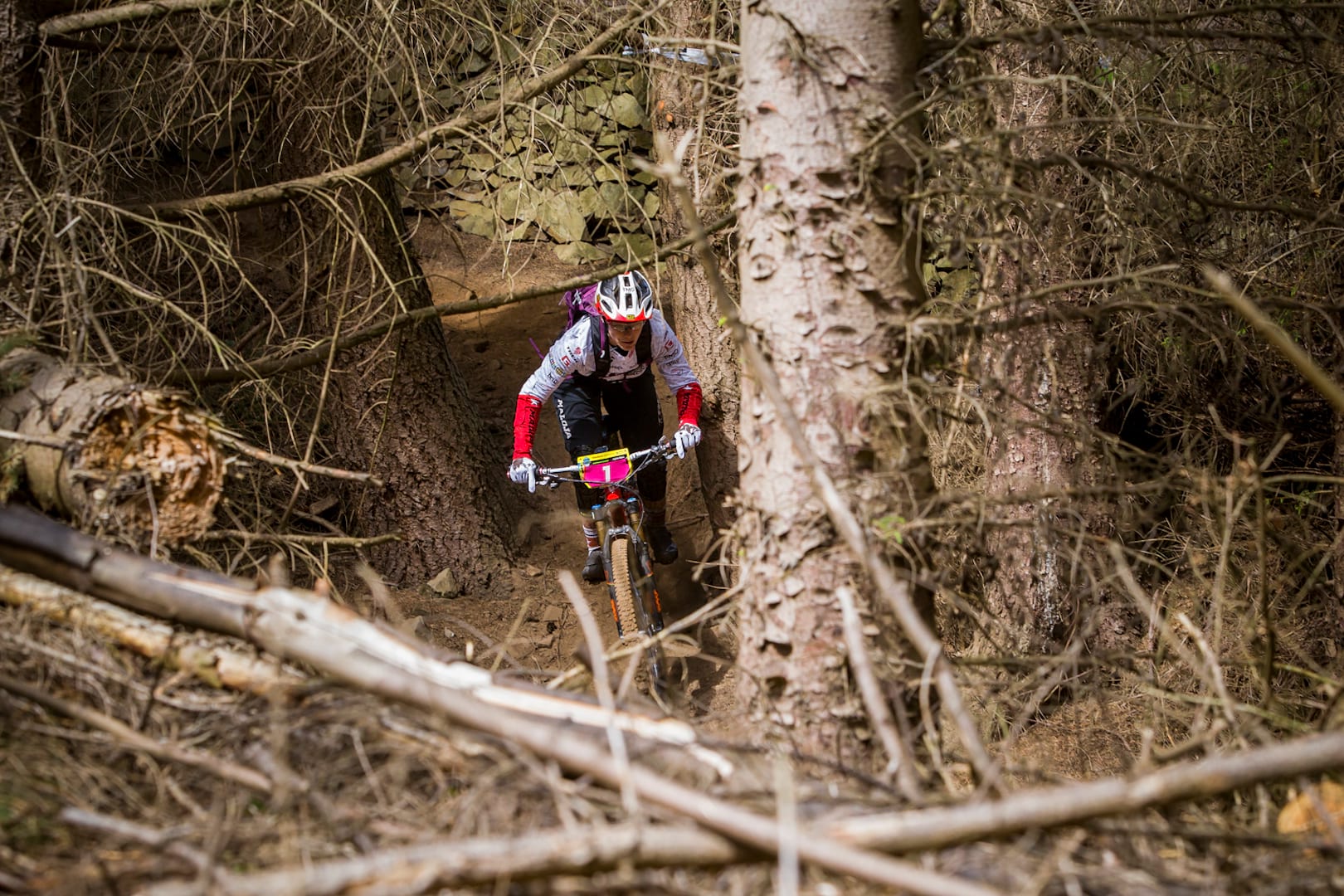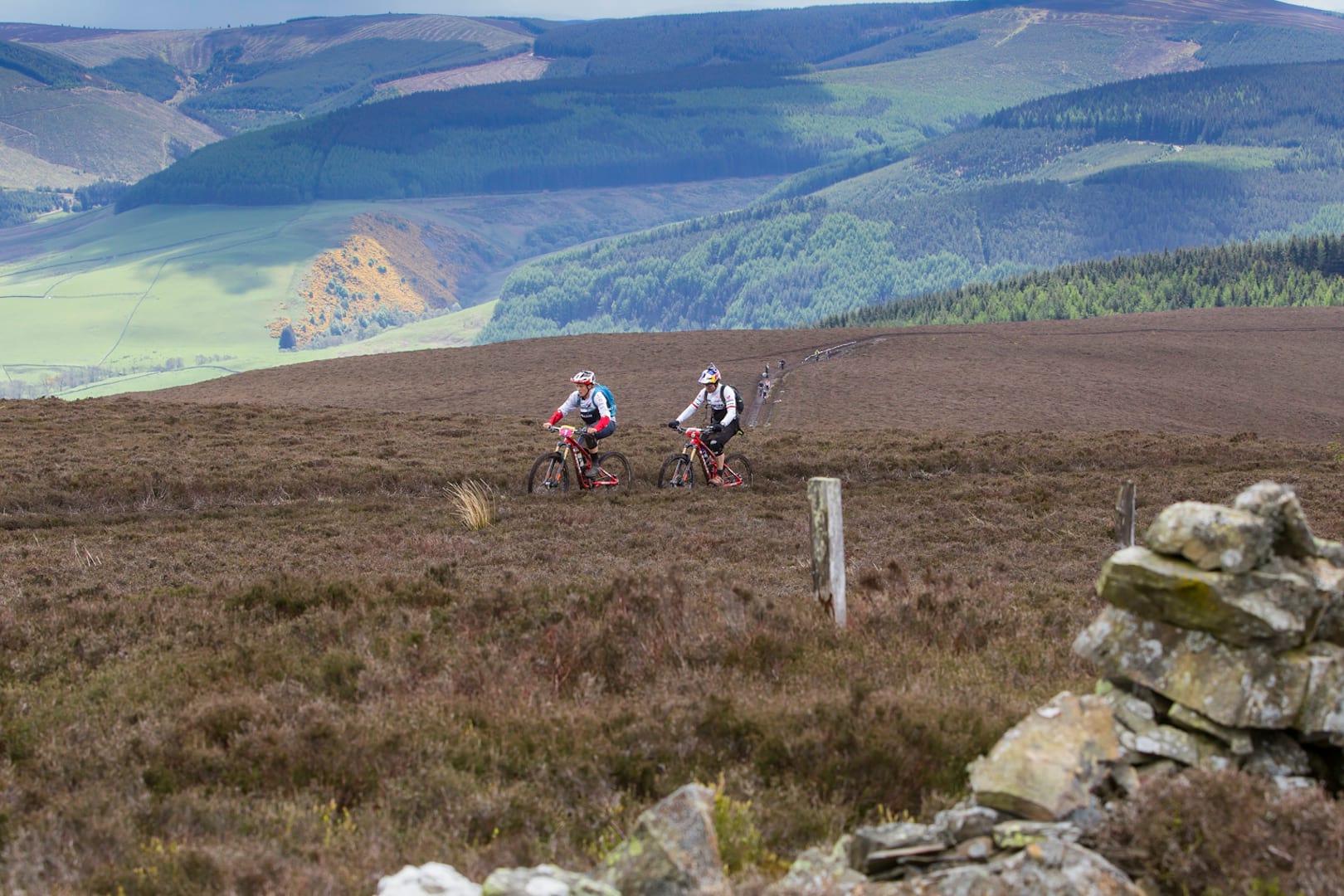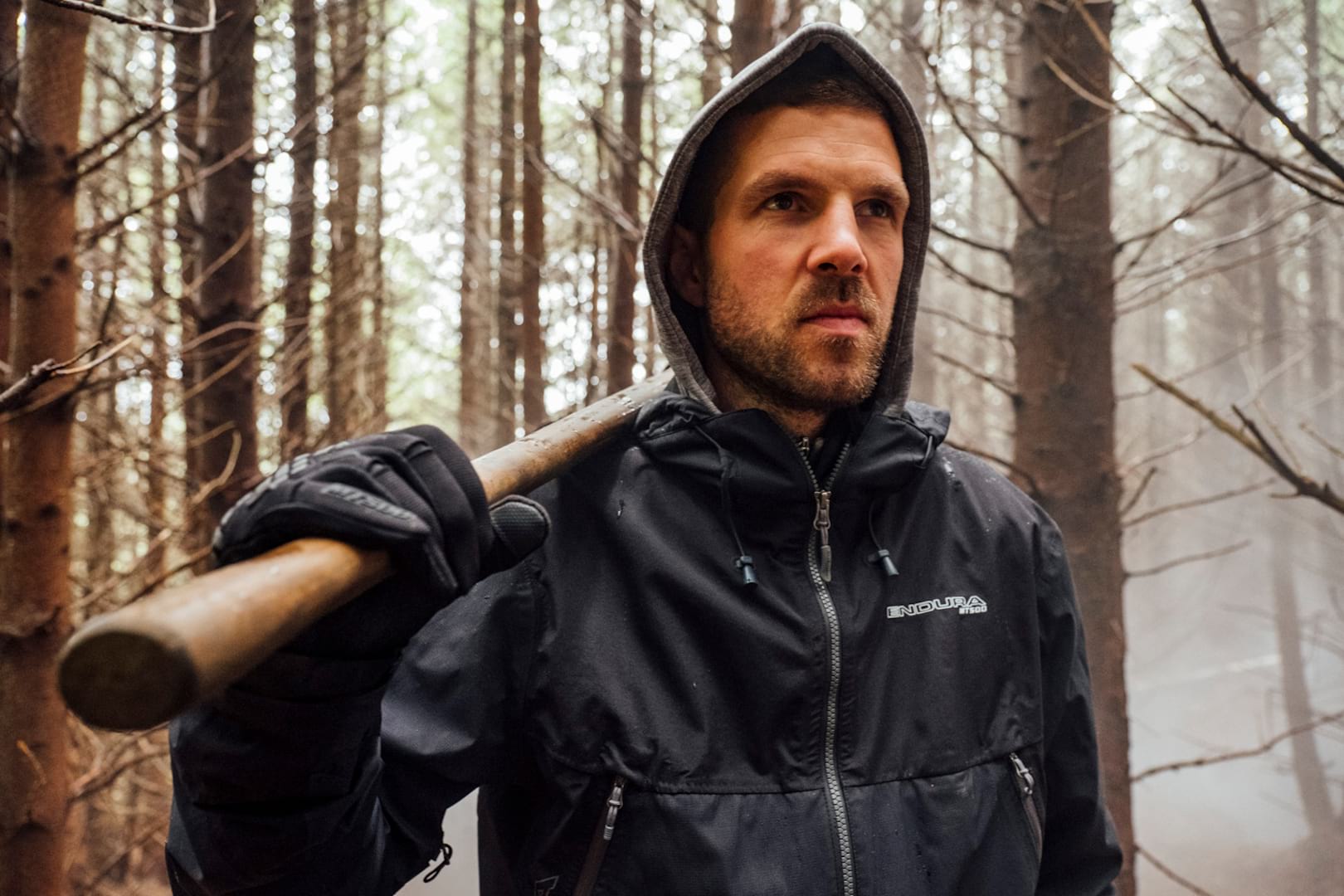Are ‘pirate trails’ breathing new life into our trail networks, or threatening their very existence?
Words Antony de Heveningham
Mountain biking, it’s fair to say, would be nothing without the trails we ride. Some of us are finding our fun on tracks that have been in use for centuries, others at purpose-built trail centres, complete with on-site bike shop and café. But a lot of the sport happens on trails that occupy a murky middle ground. Whether it’s a rough line scratched into a hillside, or the perfectly sculpted result of many hours’ graft, there are many trails which were built by riders for riders, often without any kind of permission.
These trails always used to have a low profile by default, with knowledge of them passed on by word of mouth. They would pop up in VHS video footage, or photo shoots in magazines, and their general location might be alluded to, but finding out anything else about them would often be tricky. The arrival of the internet changed the game, and you can now find locations, photos and videos of many trails that would have previously been locals-only secrets at the swipe of a finger.
It isn’t just finding places to ride that has changed. Riders and builders became able to directly share inspiration and knowledge across huge distances. A group of riders in the Home Counties might start building a trail that takes its design cues from one in British Columbia. And along the way the trail builder became a lionised, quasi-mythical figure, heading up the hill in all weathers with just a mattock to selflessly create somewhere amazing to ride.
But this huge – and in many ways positive – change in the sport hasn’t come without problems. The right trail can now draw in hundreds more riders than before, thanks to the effects of online hype. And as more trails spring up, and more riders find them, the potential negative consequences increase. Other user groups may have to deal with the paths they walk or ride on being crossed by a flat-out section of an un-signed track. The landowner may be unhappy at riders for repurposing a hillside with no thoughts of the impact on nature, commercial operations, or liability claims from weekend warriors who’ve injured themselves on enormous jumps. And trail builders may be aggrieved that their hard work gets worn out, altered, or in some cases lost entirely.
A short video edit of a trail, or a photo of a rider railing one of its corners, can never convey the underlying complexities of its creation, or the ongoing issues it might throw up. So we decided to speak to people on both sides of the hill: the builders, who are out there reshaping the land so that they and others can enjoy it on two wheels, and representatives of landowners and agencies who try to strike a balance between letting people enjoy a bit of woodland and doing things that might have serious long-term consequences.
Trails and tribulations.
Mark Beaumont (‘Not the other one, he’s young and good looking’) is the ranger for the Hurtwood, an area of common land that covers a sizeable chunk of the Surrey Hills. Full of steep hills and leafy woodland and sitting within easy reach of London, the area is a honeypot for mountain bikers, and even if you haven’t ridden there, you’ve probably seen its trails in an edit featuring one of the UK’s top riders. While some of them are officially recognised, there are many more that were cut by riders without permission and for Mark that creates a major headache.
“It’s easy to come out of London and think this is really quiet, but it really isn’t,” he explains. “It’s a small area with a lot of users. All the land in Hurtwood is privately owned and there are ten landowners in a management agreement that allows walking and mountain biking.”
For Mark, it’s not the simple act of trail construction that has caused problems – it’s the proliferation of them, the resulting increase in conflict, and the visible traces they leave on a place officially classified as an Area of Outstanding Natural Beauty.
“It’s colossal how it’s changed. Ten or twelve years ago, most mountain bikers were just out on a weekend ride. Now there are a lot more riders, sessioning the downhill trails, sometimes on e-bikes. It causes massive erosion which shows up really clearly in winter – which is when we get the most complaints. There has been a massive increase in numbers, which has put pressure on what is already a fragile situation.
“The proliferation of trails here is so great – you’ve got people building new ones just to put on YouTube. It only takes one rider to build a trail and it seems like thousands more arrive to ride it. Riders are putting in new loamy trails, riding them until they’re trashed and moving on.”
Throughout our conversation, Mark comes across as friendly and reasonable, and I find myself nodding in agreement with him as we discuss the problems that trail building creates.
“We’re not out to stop mountain biking, just make it safe and stop it taking over the area completely. I’ve seen some really badly designed trails: stuff that’s built on pristine hillside and exits directly onto a bridleway. But this isn’t a trail centre. There is nowhere on Hurtwood that is a bike-only trail – you could meet a family or a horse rider and they’ve got as much right to be there as you.
“There is a massive existing trail network – you couldn’t map it if you tried. But there still seems to be the attitude that when a trail gets boring, you go and build another one, and you can’t do that.”
Flipping the coin.
To see the extent of the gulf between the builders and the landowners, you’ve only got to talk to one of the former.
“Building trails is a creative outlet like no other – the anticipation of it all coming together, the planning and the pulling together of resources…” I’m speaking to Sam Fowler, who now runs a mountain bike hire and skills coaching business in Bristol but who still picks up a spade whenever he can. Talking to Sam, it’s obvious he loves the act of building just for what it is, but he also knows what riders get from it.
“It’s hard to replicate the feel of a natural, unofficial trail at a bike park or trail centre. People like riding freshly cut loamy trails and crazy, sketchy, techy stuff for how it feels under your tyres and the challenge it offers. The terrain you need for this stuff wouldn’t last or be deemed safe at a trail centre.”
This idea – that unofficial trails are fulfilling an unmet demand for challenge and progression – is one that comes up repeatedly, and helps to explain why some of the most popular trail centres have grown shadowy counterparts.
If there’s a place in the UK that typifies this, with a network of unofficial trails that is starting to eclipse the purpose-built ones, it’s the Tweed Valley. Having two of the world-renowned 7stanes to play on hasn’t stopped riders from digging outwards into many of the surrounding hills, and these steep, technical trails were thrust into the spotlight in 2014 when the area hosted a round of the Enduro World Series. Neil Carnegie is the co-chair of the Tweed Valley Trails Association, and is an unapologetic advocate for the unofficial trail network he helped to create.
“For many riders these days, hand-built trails, not trail centres, are the sport. We’re very lucky to have two great trail centres in the form of Glentress and Innerleithen and amazing access laws, but the volume and variety that the unofficial options add to the riding locally can’t really be overstated. For anyone looking for a more rugged experience than the trail centres offer, quieter tracks, a natural surface or steep or technical riding, the off-piste trails are where you need to go.”
From Neil’s point of view, the trails he loves are the just illegitimate children of the sanctioned, overly risk-assessed trail centres:
“Bikes and riding skills have outgrown the trails at the centres. Fifteen years ago on a hardtail with a dodgy fork, the Glentress black was a challenge to survive. Now a really fit beginner might ride it their first week on the bike. Trail centres do an amazing job of creating mountain bikers in large numbers, but then don’t offer them progression or variety beyond a certain point. No one is providing anywhere for these progressing riders, so inevitably they do it themselves.”
The official line.
Katie Jarvis, Forestry Commission Scotland’s recreation manager for the Tweed Valley, views the explosion in unofficial trails with more caution: “There’s been a significant increase in the amount of unofficial trails being built in the last 10 years compared to the preceding 20 years. The amount of digging put into a given line has generally increased. Usage has increased greatly, lines have worn in and evolved, some trails have suffered significant wear. Strava and Trailforks have made it much easier for riders to find most unofficial trails. The growth of enduro riding and racing and the capability of modern trail bikes have also likely contributed to their increased use.
“On the one hand, I’m sure many in the mountain biking community will see this as a great thing but there is a flip side – and that is the various problems this can cause land managers, other visitors and the forest environment. What little resource we have does end up being spread thinly as we can’t ignore all the unauthorised trails in the Tweed Valley.”
“Unofficial trails aren’t a new thing – they’re how mountain biking started,” says Graeme McLean of Developing Mountain Biking in Scotland (DMBinS), from his office in Peebles, a very short hop from some of the trails Neil is talking about. “The trails at Glentress were originally put in to give riders a better experience than the unofficial stuff, and a lot of riders have come up through that system. The problem is that there’s no continuous funding to keep building new trails, but demand for them is still there.”
You leave us no choice.
For some builders it’s not a choice, it’s a necessity. Olly Tyne started riding as a teenager in a sleepy corner of the Cotswolds: “Within a ten-mile radius of me there are two small, not particularly amazing, BMX tracks and a small skatepark. But we have all this fantastic woodland surrounding us. When I hit the age of 12 or so I began exploring and going out independently. Me and my friends came across a set of dirt jumps that some older lads had built. Before we knew it we were riding our bikes up there all day, every day. This very quickly evolved to us building as our riding skills developed. Building was a massive part of the fun for us.”
Olly carried on digging and riding locally as he grew up, which led to a job in the bike industry although he’s now training as a teacher. “I think what’s happened with trail centres and places like Bike Park Wales is fantastic. But a massive part of mountain biking for me is escape from the stresses of daily life or just to wind down after work. I want to be able to just get home, grab my bike and cycle out the front door. Not get back in my car and drive to the nearest official trails or whatever.”
Common ground.
If the popular stereotype of a trail builder is a spotty lad knocking up some half-finished jumps during half-term holidays, there are plenty of devoted diggers who manage to keep it up into adulthood. Neil describes the Tweed Valley’s trail builders as: “A broad mix of ages, from young lads in their early twenties and late teens, to a chap in his sixties who is building some of the most technical stuff we have. The average age is probably above 35, with most of the builders being normal folk working full-time jobs.”
And as the kids digging jumps in the woods grow up, their concerns start to align more with the landowners. All the trail builders I speak to are keen to stress the importance of doing it properly. “Take your time to build well and dig beautiful shapes. Never cut down trees, or build anything using wood. Don’t be lazy and cut corners, or you’ll end up with horrible, dangerous shit in the woods and someone will get hurt,” cautions Sam.
Olly goes even further: “I’m a big advocate for planning a track and considering if it really needs to be built. I like to make sure that it links in with the other trails to become a network, all based in a similar area, in a way that is the least offensive for other users of the woodland. There are a lot of factors to be considered and you have to remember it’s ultimately not your land to do this on.”
Just as the forest rangers are concerned about the number of riders cutting trails in the Hurtwood, the builders, too, often try to keep traffic light and avoid wrecking their hard work. “If you need help to dig, then get on the internet,” says Sam. “If not, then stay away from it.”
Neil is keen to stress that the unofficial trails can survive a bit of wear (“I can’t actually think of a single one of the unofficial trails here which has become unrideable over the years”), but when asked about the impact the valley’s numerous mountain bike events are having, he becomes a bit more ambivalent.
“In terms of wear and tear on the trail network, by far the biggest challenge we face locally is the huge footprint enduro racing is leaving on the network. One wet race can put a normal year of wear into a trail, and we’ve had five major enduro races use our area this year, so something is going to have to change in terms of maintenance if we don’t want all our best trails to turn into battered racecourses.”
Another crew I speak to have been told by the landowner not to publicise their trails under any circumstances, and they’re fine with that. “The place is too busy as it is now, and that would just make it way worse.” And of course, the impact of a popular ride logging app hasn’t gone unnoticed. “Strava is evil,” states an unnamed builder I speak to. “It attracts dickheads to our trails, and increases traffic, which is the last thing we want.” “Strava’s great,” says Mark the ranger with a chuckle. “I can see exactly what’s happening with the trails and I don’t even have to leave the office. There are places where it’s had a noticeable impact though, particularly with things like widening trail entrances. We had one area that was such a problem we actually got Strava to set up an exclusion zone around it.”
Playing it safe.
Even if trail builders try to be considerate, there’s a web of complications for landowners which can’t be cut through with a spade. “There are legitimate environmental concerns,” says Graeme from DMBinS. “Riders may not realise that they’re building within 1km of an osprey’s nest, and if a landowner allowed that kind of development, they could be fined. It hasn’t happened yet, but things like that are a concern.”
Ever-present in the background is the thorny issue of safety, and what happens if a rider decides to claim against the landowner after suffering an injury.
“Liability is something the landowners are very conscious of,” says Mark. “If a rider claims on personal accident insurance, their insurer will be looking to recover that from the landowner. We were looking for trustees for the Hurtwood recently but people didn’t want to get involved, due to the liability issue. In the end we had to form a limited company.”
The situation is complicated by the fact that, under UK law, it’s very hard for landowners to transfer or share a potential liability. “Even if mountain bikers abandon a trail, it’s still the landowner’s responsibility,” points out Graeme.
“If you are going to build, remember anyone could come across what you’ve done and try to ride it,” says Neil. “You don’t want a bad injury or worse on your conscience, so don’t build features which could ambush someone on a blind run. Corners are better than hucks. Your trail is half as wide, twice as slow, the corners are tighter and it’s way more technical than you think. Build it so it’s too easy and fast and it might be about right.”
Your name’s not on the list.
Katie Jarvis from Forestry Commission Scotland is keen to stress that using a trail for an event doesn’t give it the official stamp of approval. “We haven’t adopted any of the unauthorised trails. We have allowed their responsible use for enduros, as we understand that they are key to the success of these events and benefit the local economy. We also operate the Community Asset Transfer Scheme, and so far we have helped a small number of communities take ownership of woodlands for a range of purposes. We have had no applications in from mountain bike groups to date, but we are aware there is some interest out there.”
Behind the scenes, the builders in the Tweed Valley are moving towards the point where their trails could be officially recognised, outside of Strava segments and one-off events. “There’s a fledgling charity in place with a board and constitution now, the Tweed Valley Trail Association,” says Neil. “We’re pushing FCS [Forestry Commission Scotland] to sign a management agreement and let us start adopting and managing the network. If we can do it then it will be a huge benefit for the area – being able to fundraise, look after, organise digs and sign the trails should be a great thing that benefits everyone, from local businesses and riders to the FCS themselves with better liability protection. It’s a painfully slow process, but if we can do half what we hope to then it will be worth it many times over.”
For other riders, the first hurdle – letting a landowner know that you’re building and riding on their property – is just too big and risky to jump. “ I’ve thought about contacting the landowner to ask permission several times,” says Olly. “However, I’m scared if it’s brought to their attention then it could become a problem.”
Sam Fowler, who is part of a group that helped take their local downhill spot from being on borrowed time to becoming a bike park, acknowledges that not everyone will want to go through this process. “It saps a lot of time to make a spot official and you need to be really passionate, forward-thinking and committed to make it work out. You need a solid crew of people around you too. But you need to think of the bigger picture. Some people’s attitudes might be difficult to change once they’ve had a bad experience with a rogue builder on their land.”
Doing it right, in the right place.
Graeme McLean speaks as someone who is trying to encourage a more proactive approach to managing unofficial trails. “We advocate dialogue with landowners. It’s all about having the right trail in the right place. At present the processes for doing this are too bureaucratic and it’s easier to ask for forgiveness than for permission.”
Graeme’s suggested solution is to create a roadmap for builders and landowners to work together, complete with some innovative suggestions.
“We’re currently producing guidance for mountain bikers and landowners which will hopefully lead into a set of pan-European standards, covering things that have never been included before, like steep fall-line trails. Trail associations are going to be vital to the future, as there’s scope for a group to take on responsibilities like inspection and maintenance and create a paper trail that could really assist landowners.”
Graeme even goes as far as suggesting that working in partnership could create a new model of trail development. “Sometimes people expect a trail to be built to Glentress standards but if you’re talking about a trail in plantation forest, there’s no reason why that should be the case. You could have something hand-built that wears out quickly, but it’s much cheaper than £100 a metre, and the land is just reinstated at some point. We need to be a bit more forward thinking.
“The benefits of unofficial trails are obvious in terms of tourism, and the sport. Scotland’s producing some of the best mountain bikers in the world right now. We’ve had a good run at it, but at some point landowners are going to kick back. The future’s going to have to be a bit more organised, and we’re going to have to grow up a bit and work together.”





